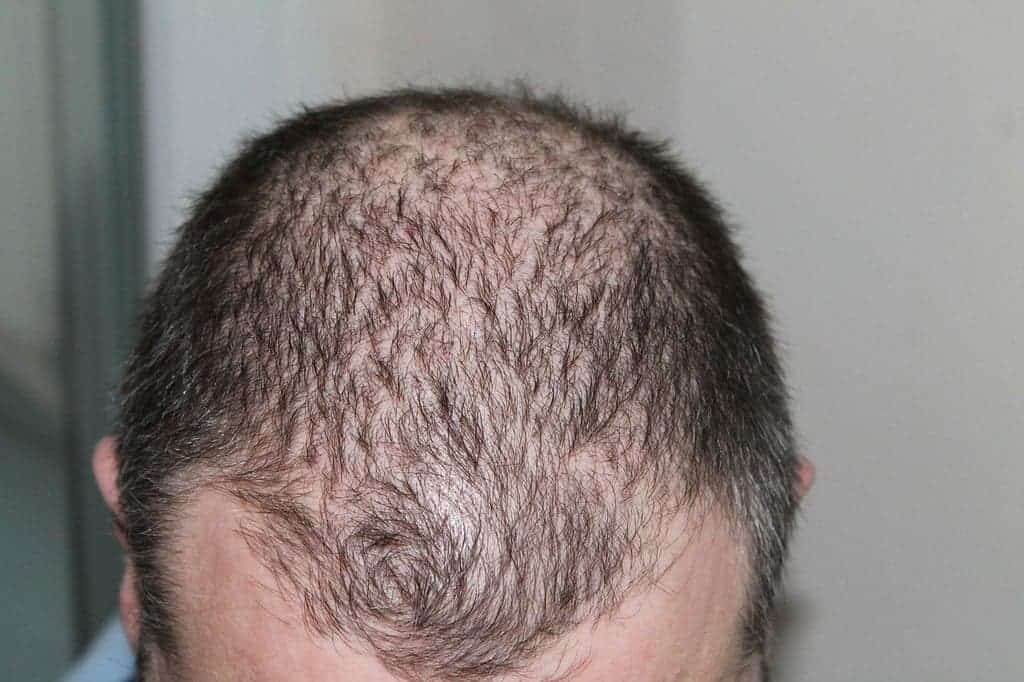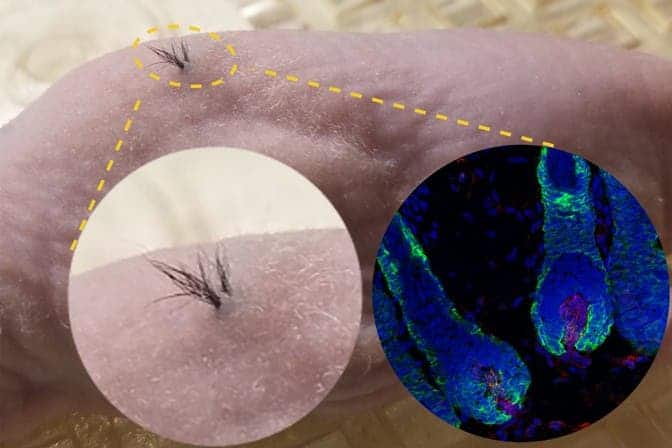
Despite an immense scientific and commercial interest, halting and reversing hair loss hasn’t been truly possible — until now. In a new series of studies, a U.S. startup claims it has developed a way to clone hair follicles using stem cells derived from a person’s own cells (i.e. not fetal). A 3-D printer is used to generate a Jell-O-like mold which holds the follicles in place for the hair to grow. In the future, this procedure — which so far has only been tested on mice — could form the basis for truly regenerative hair treatment.
Unlimited hair
The hair restoration market crossed $5 billion in 2017 and is expected to witness more than 25% compound annual growth rate from 2018 to 2024. This phenomenal market growth isn’t all that surprising considering the number of people affected by pattern hair loss. According to the American Hair Loss Association, two-thirds of men will begin to see their locks lose some of their luster by age 35. At age 50, about 85% of men will have experienced a significant amount of thinning. And although pattern baldness is generally thought of something that affects mostly men, women are no strangers to it. In fact, an estimated 40% of individuals affected by hair loss are female.
Today, commercially available hair restoration treatments mostly consist of the surgical transplantation of hair follicles. The procedure, which costs around $10,000, involves moving hair from one part of the scalp to another. The problem with this procedure is that a person is limited by the amount of available hair. Sometimes, hair from the back or armpits can be transplanted, but the result may turn out to be less-than-aesthetically pleasing.
One solution to his predicament is cloning a person’s hair follicles — this way you’d truly have an unlimited supply of hair.

According to The Atlantic, Stemson Therapeutics, a San Diego-based startup, has developed an innovative therapy that clones hair follicles from stem cells and implants them around a person’s dormant follicles. The stem cells are derived from a person’s own cells, such as skin or blood, and do not involve fetal stem cells. Since a person’s own cells are used, there’s little risk that the immune system will reject the transplant.
The company’s findings were recently presented at the annual meeting of the International Society for Stem Cell Research, where researchers shared images of tufts of hair growing from the back of a mouse. It may not look very impressive but as a proof of concept this a huge leap forward in regenerative medicine.
The researchers had to overcome a number of challenges. Other groups have tried to clone hair but eventually failed because, over time, the stem cells would stop producing hair. The American researchers solved this problem by culturing cells together in a teardrop shape so they continue to signal each other, rather than letting them spread out. The shape of the follicle is also critically important, otherwise, cloned hair can grow inward or sideways instead of sprouting through the skin outward. In order to grow hair follicles that hold their shape, the startup partnered with researchers at Columbia University to produce a 3-D printing mold that holds the follicles and dermal papillae together.
For both men and women, hair loss can cause considerable emotional damage, including loss of self-esteem and confidence. Before you get too excited, there are some caveats. This research is still preliminary and we might be still many years away from having this treatment ready for human use. And when it will become available, expect it to be quite expensive — at least at first. Growing new hair, follicle by follicle, sounds like a cumbersome procedure that ought to cost at least as much as conventional hair transplant surgery.


